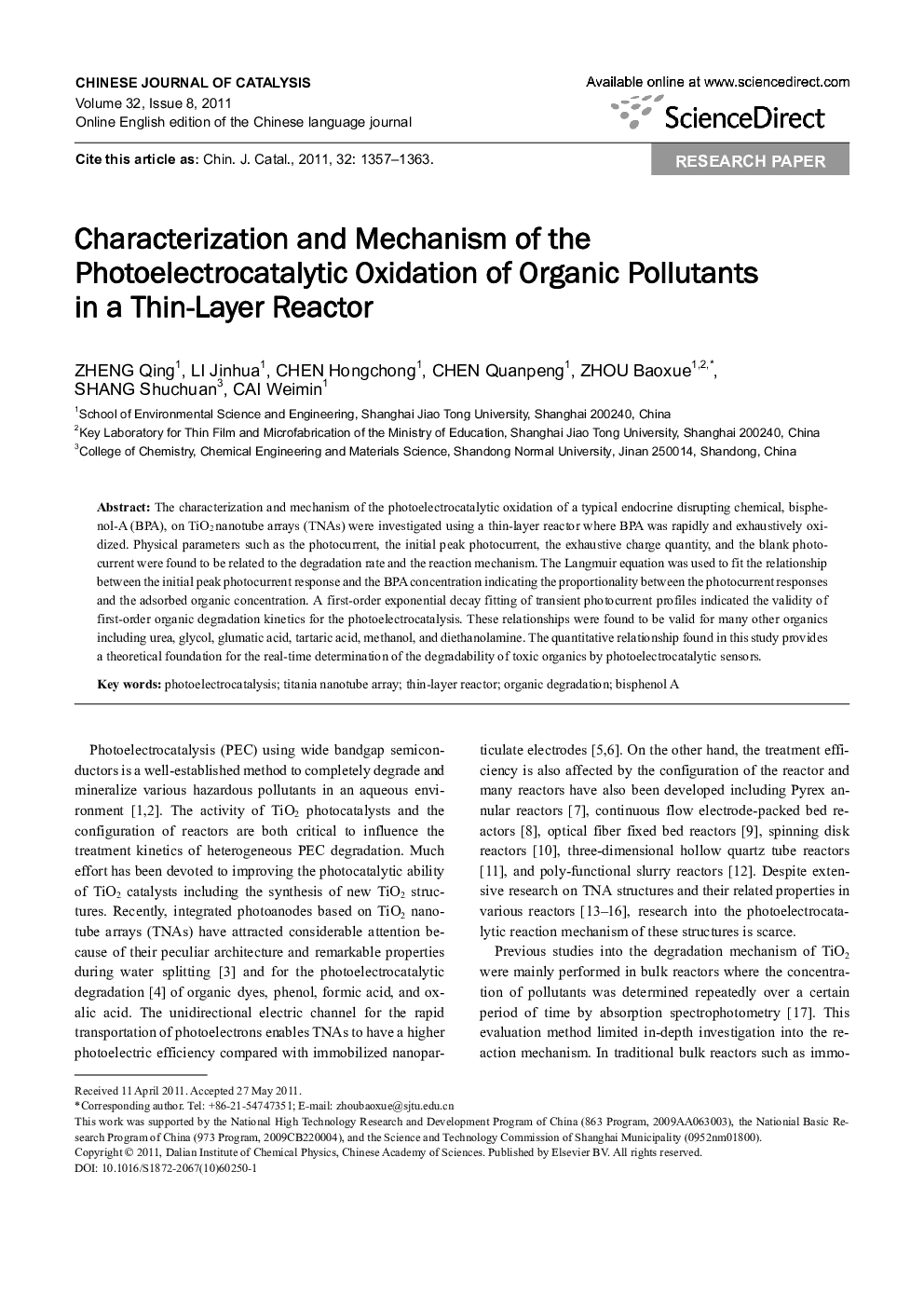| Article ID | Journal | Published Year | Pages | File Type |
|---|---|---|---|---|
| 60270 | Chinese Journal of Catalysis | 2011 | 7 Pages |
The characterization and mechanism of the photoelectrocatalytic oxidation of a typical endocrine disrupting chemical, bisphenol-A (BPA), on TiO2 nanotube arrays (TNAs) were investigated using a thin-layer reactor where BPA was rapidly and exhaustively oxidized. Physical parameters such as the photocurrent, the initial peak photocurrent, the exhaustive charge quantity, and the blank photocurrent were found to be related to the degradation rate and the reaction mechanism. The Langmuir equation was used to fit the relationship between the initial peak photocurrent response and the BPA concentration indicating the proportionality between the photocurrent responses and the adsorbed organic concentration. A first-order exponential decay fitting of transient photocurrent profiles indicated the validity of first-order organic degradation kinetics for the photoelectrocatalysis. These relationships were found to be valid for many other organics including urea, glycol, glumatic acid, tartaric acid, methanol, and diethanolamine. The quantitative relationship found in this study provides a theoretical foundation for the real-time determination of the degradability of toxic organics by photoelectrocatalytic sensors.
